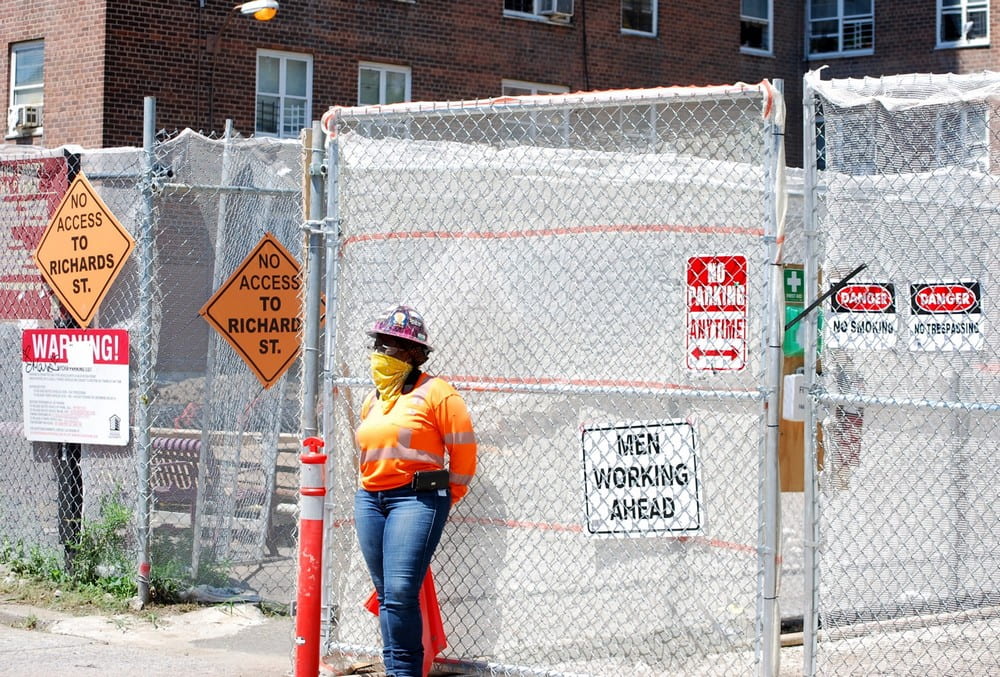
In the bustling arena of UK construction, safety reigns supreme. Whether it’s a towering skyscraper piercing London’s skyline, or a quaint cottage renovation in the Cotswolds, temporary fencing plays a crucial role in safeguarding both construction workers and the public. But erecting a barrier isn’t enough; navigating the intricacies of regulations can be a daunting task for contractors. Fear not, intrepid builders, for this article serves as your compass, guiding you through the complexities of temporary fencing regulations and standards in the UK.
To begin with, we’re going to introduce the main challenges that temporary fencing helps to overcome, then we’ll discuss the specific regulations in the UK that cover these issues, then we’ll look into real world examples of how these regulations work together to provide accurate and easy to follow guidance on temporary fencing.
Meeting the Multi-Pronged Challenge of Health and Safety
Contractors are the guardians of safety on their sites, and the Health and Safety at Work Act 1974 lays the foundational principles. This act, along with the Construction Design and Management Regulations 2015 (CDM 2015), outlines a multi-pronged approach to risk management. Temporary fencing comes under the purview of these regulations, as it directly impacts:
- Preventing unauthorised access: Protecting both workers inside and the public outside from accidents and exposure to hazardous materials.
- Safeguarding pedestrians and vehicles: Enacting clear boundaries and minimising the risk of collisions with construction activities.
- Controlling debris and materials: Preventing unwanted materials from spilling out onto streets or public areas.
- Maintaining visual control: Clearly defining the construction zone and aiding emergency response if needed.
Owning vs Renting: Choices with Consequences
Whether you choose to purchase or hire temporary fencing depends on your project’s needs and budget. Owning offers long-term flexibility and customization, but requires storage space and maintenance. Hiring, on the other hand, provides immediate availability and eliminates maintenance burdens, but incurs rental costs.
Regardless of your choice, both purchased and hired fencing must comply with specific regulations:
- BS 1722-18:2011: This British Standard dictates the minimum requirements for free-standing temporary steel mesh construction fence panels. It covers aspects like panel height, mesh size, and stability requirements.
- Chapter 8: Beyond the general BS 1722 and HSE guidance, temporary fencing must also comply with Chapter 8 of the Traffic Signs Manual. This chapter provides specific requirements for using traffic management equipment on roads and highways, including temporary barriers. For construction projects near roads or highways, fully understanding Chapter 8 compliance is vital. This chapter dictates requirements like barrier height, reflectivity, and visibility, ensuring clear guidance for motorists and pedestrians about the construction zone.
- HSE Guidance Note GS48: Protecting the Public – Your Next Move (HSG 151): This non-binding guidance provides advice on achieving safe construction sites. For temporary fencing, it recommends a minimum height of 2 metres, with additional recommendations for visibility and stability in particular circumstances.
- Local Planning Authority requirements: Some local authorities may have additional regulations regarding fencing aesthetics, visibility, and signage. Always check with your local authority before erecting fencing.
Adapting Temporary Fencing to Real-World Scenarios
While Chapter 8 of the Traffic Signs Manual sets the stage for compliant road work fencing, the real world of construction demands a nuanced approach to temporary fencing regulations. Different project types – from the venerable walls of historic buildings to the pulsating energy of crowded events – require specific considerations beyond Chapter 8’s focus on traffic management. Let’s delve into how regulations adapt to unique settings.
Historic Buildings
- BS 1722 takes the lead: Dictates panel height and stability to ensure worker safety while preserving the building’s integrity.
- Gentle touch needed: Ground anchors must avoid damaging delicate foundations.
- Local planning authorities have a say: Aesthetics and signage regulations come into play.
Public Events
- HSE guidance raises the bar: Robust crowd control barriers exceeding the standard 2 metres of BS 1722 are crucial.
- Clear signage is key: Guiding the throngs through designated access points is essential.
- Chapter 8 joins the chorus: Ensuring barrier visibility and smooth pedestrian flow prevents accidents and keeps the event running smoothly.
Roadworks
- Chapter 8 takes centre stage: Highly visible fencing and phased lane closures minimise traffic disruption.
- BS 1722 provides the foundation: Panel stability must withstand the rumble of passing vehicles.
- Collaboration is key: Coordination with traffic authorities ensures smooth detour implementation and adherence to work schedules.
Remember, compliance isn’t a one-size-fits-all solution. Understanding how different regulations like BS 1722, HSE guidance, local regulations, and Chapter 8 interact is crucial for tailoring temporary fencing solutions to each project’s unique needs. By following these guidelines and adapting your approach to diverse settings, you can ensure not only legal compliance but also create safe and efficient work environments for all.
Beyond the Minimum: Building a Culture of Safety
While adhering to regulations is essential, safety shouldn’t stop at the bare minimum. Consider these additional best practices:
- Conduct thorough risk assessments. Identify potential hazards and tailor your fencing plan accordingly.
- Choose the right type of fencing. Different materials and designs offer varying levels of security and visibility. Select fencing appropriate for the risks on your site.
- Secure installation. Ensure panels are firmly connected and properly grounded to prevent wind or accidental impact from toppling them.
- Regular inspection and maintenance. Regularly check for damage, loose fittings, or corrosion and address any issues promptly.
- Clear and prominent signage. Use easily understandable signage to warn pedestrians and vehicles of potential hazards and restricted access.
Temporary fencing may seem like a simple safety measure, but it’s a crucial element in the intricate tapestry of UK construction regulations. By understanding the relevant regulations, carefully choosing and maintaining your fencing, and adopting a proactive approach to safety, contractors can create secure and compliant work environments for all. Remember, navigating the complexities of temporary fencing regulations can be easier with the right knowledge and commitment. So, go forth, build with confidence, and watch your project progress safely under the protective embrace of well-regulated temporary fencing.








